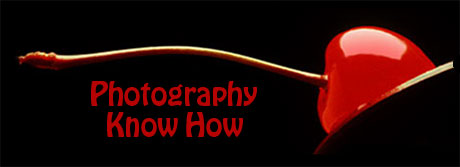Among digital camera features aperture priority is an excellent feature that will give you more control over depth of field.
Using aperture priority mode allows you to select the aperture and the camera then selects a shutter speed that will give the correct exposure. The aperture is used to control the amount of light that reaches the image sensor or film during exposure by adjusting the size of the opening. These sizes are known as f/stops.
In addition to controlling exposure, the aperture (f/stop) also affects DOF, or depth of field.
Whenever it’s very important that you to control those areas that you want to be in sharp focus as well as anything you don’t want to be sharply focused in your picture, you can select aperture priority. This allows you to choose the correct f/stop needed to control the depth of field.
In some situations, you may prefer to have everything from foreground to background appear sharp in your photo, so choosing a smaller f/stop will give you more DOF.
At other times, however, you may want only a small part of your image to be sharp and will need to use a larger f/stop for limited DOF.
Keeping It Sharp
If you have important information in your picture in both the foreground and background, such as in a landscape photo, or whenever several important objects are at different distances from the camera, you will probably want to have everything in focus.
Using a small f/stop is one part of the solution to getting as much DOF as possible. But where you focus is also very important.
Depth of field is an area of acceptable sharpness that extends both in front of and behind the point of actual focus. Sharpness gradually decreases from the focus point until eventually you will be able to see this lack of sharpness. This fall off occurs more quickly in front of the focus point than behind the focus point.
A good way to pick the best focus point is to look at the nearest object in your scene that you want to appear in focus. Next look for the most distant object. You then mentally divide this total area into thirds and focus on something that is about 1/3 of the distance from your camera.
This is referred to as the hyperfocal distance, and will give you maximum depth of field.
Using Selective Focus
There are also times when having everything sharp is not your best option. A good example is in a portrait. If you want to make sure your subject stands out from a distracting background, you can use selective focus to keep your subject sharp while throwing the background (or foreground) out of focus. This will help to emphasize your subject and make for stronger composition.
Controlling what is sharp and what is blurred in your photos gives you more control and makes aperture priority an important feature to have on your digital camera.
It is simple to use and if you have this feature you should experiment with it and explore the creative possibilities that controlling focus can open up to you.
There are many other options available on today’s advanced digital cameras. Some of these will be added to this section in the future.
Here’s to better photography …

Al Hannigan



[…] Using Aperture Priority Mode […]